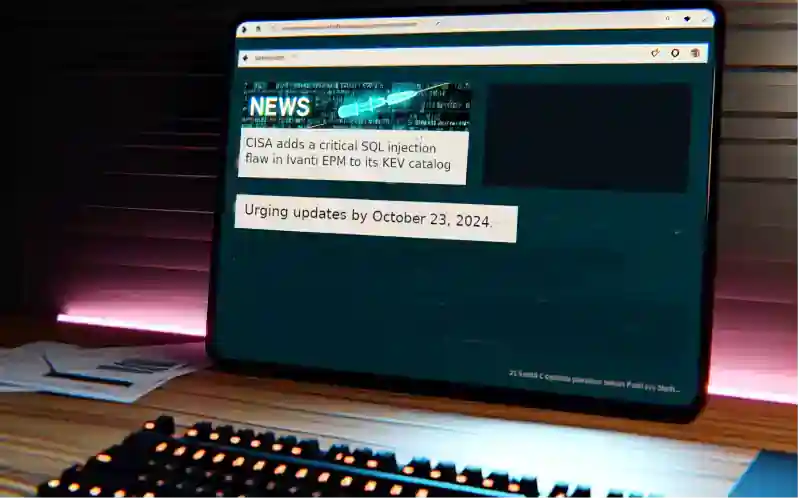
“Securing the Nation: CISA Targets Critical Vulnerability in Endpoint Manager for Enhanced Cyber Defense”
Analyzing the Impact of CVE-2024-29824: A Critical SQL Injection Vulnerability in Ivanti EPM
The recent addition of the CVE-2024-29824 vulnerability to the U.S. Cybersecurity and Infrastructure Security Agency’s (CISA) Known Exploited Vulnerabilities (KEV) catalog underscores a growing concern within cybersecurity circles about the robustness of network defenses against increasingly sophisticated attacks. This particular security flaw, which affects Ivanti’s Endpoint Manager (EPM), was patched in May but has been confirmed to be actively exploited, highlighting a critical oversight in timely system updates and the vigilance required in monitoring even previously addressed vulnerabilities.
CVE-2024-29824 is not just another number in the ever-expanding catalog of cyber threats; it represents a severe risk with a CVSS score of 9.6, indicating its potential for significant impact due to its critical severity. The vulnerability stems from an SQL injection flaw in the Core server of Ivanti EPM 2022 SU5 and earlier versions. This allows an unauthenticated attacker within the same network to execute arbitrary code—a capability that can give attackers deep control over affected systems.
The mechanics of the exploit were detailed by Horizon3.ai, which released a proof-of-concept (PoC) exploit following the discovery of the flaw. The vulnerability resides in a function called RecordGoodApp() within a DLL named PatchBiz.dll, which mishandles an SQL query statement. This mismanagement enables an attacker to gain remote code execution through xp_cmdshell, a powerful feature that can run system commands on the SQL server.
Despite Ivanti’s prompt response with a patch and subsequent advisories confirming the exploitation of this vulnerability, the real-world application of this exploit remains somewhat nebulous. However, Ivanti’s acknowledgment that a “limited number of customers” have been targeted by this exploit suggests that the threat is not only real but also actively being leveraged by attackers.
This incident is part of a larger trend, as Ivanti appliances have seen a string of vulnerabilities being actively exploited. In just one month, four different flaws were reported:
– CVE-2024-8190: An operating system command injection vulnerability in Cloud Service Appliance (CSA).
– CVE-2024-8963: A path traversal vulnerability in CSA.
– CVE-2024-7593: An authentication bypass vulnerability in Virtual Traffic Manager (vTM).
These vulnerabilities collectively paint a troubling picture of potential security lapses and the high stakes involved in protecting network infrastructures. The repeated exploitation of these vulnerabilities signals a worrying pattern that threat actors are not only aware of but are also capable of exploiting multiple attack vectors within a short span.
Given these developments, federal agencies have been given a deadline until October 23, 2024, to update their instances to the latest version. This directive is part of a broader effort to mitigate the risks posed by these vulnerabilities, emphasizing the urgency and necessity for continuous vigilance and prompt action in cybersecurity practices.
The situation with CVE-2024-29824 serves as a stark reminder of the challenges faced in securing cyber infrastructures against evolving threats. It highlights the need for organizations to not only apply patches promptly but also to monitor all systems continuously for any signs of breach attempts, ensuring that even vulnerabilities considered patched do not provide a backdoor for cyber adversaries. As cyber threats grow more sophisticated, so too must our strategies for defending against them, necessitating a dynamic approach to cybersecurity that is proactive rather than reactive.














